A garage is transformed into music production studios in Kortrijk

The Belgian band, GOOSE, see their surroundings as an integral part of their music making. Their new headquarters, Safari Studios, designed by architect Steven Vandenborre, occupies a former garage building in the centre of the city of Kortrijk. Carefully restored and converted into a modern space for music production, this new multi-use interior now comprises three recording studios, a kitchen-living area, and an expansive ground floor dedicated to exhibitions and artistic performances.
The project emerged as a close collaboration between the musicians and the architect. Both inside and out, the design concept draws on the character of the original building – the industrial nature is preserved and elements from the former garage have been given new, unexpected functions. ‘We fell in love with the building immediately, and it was very important for us to keep its spirit instead of invading it. We wanted to explore its potential and create something very personal at the same time,' says Mickael Karkousse, the lead singer of the band. ‘The way the studios turned out is, I think, a good metaphor for who we are, and how we work, the four of us.'
The upper levels are where the band members – Mickael Karkousse, Dave Martijn, Tom Coghe, and Bert Libeert – work. Rendered in a muted colour palette, inspired by Bauhaus, the interior retains the original structure, while any new details and furniture are highlighted through the use of carefully composed contrasts. Light penetrates every space, and a large window overlooks the main recording studio from the kitchen.
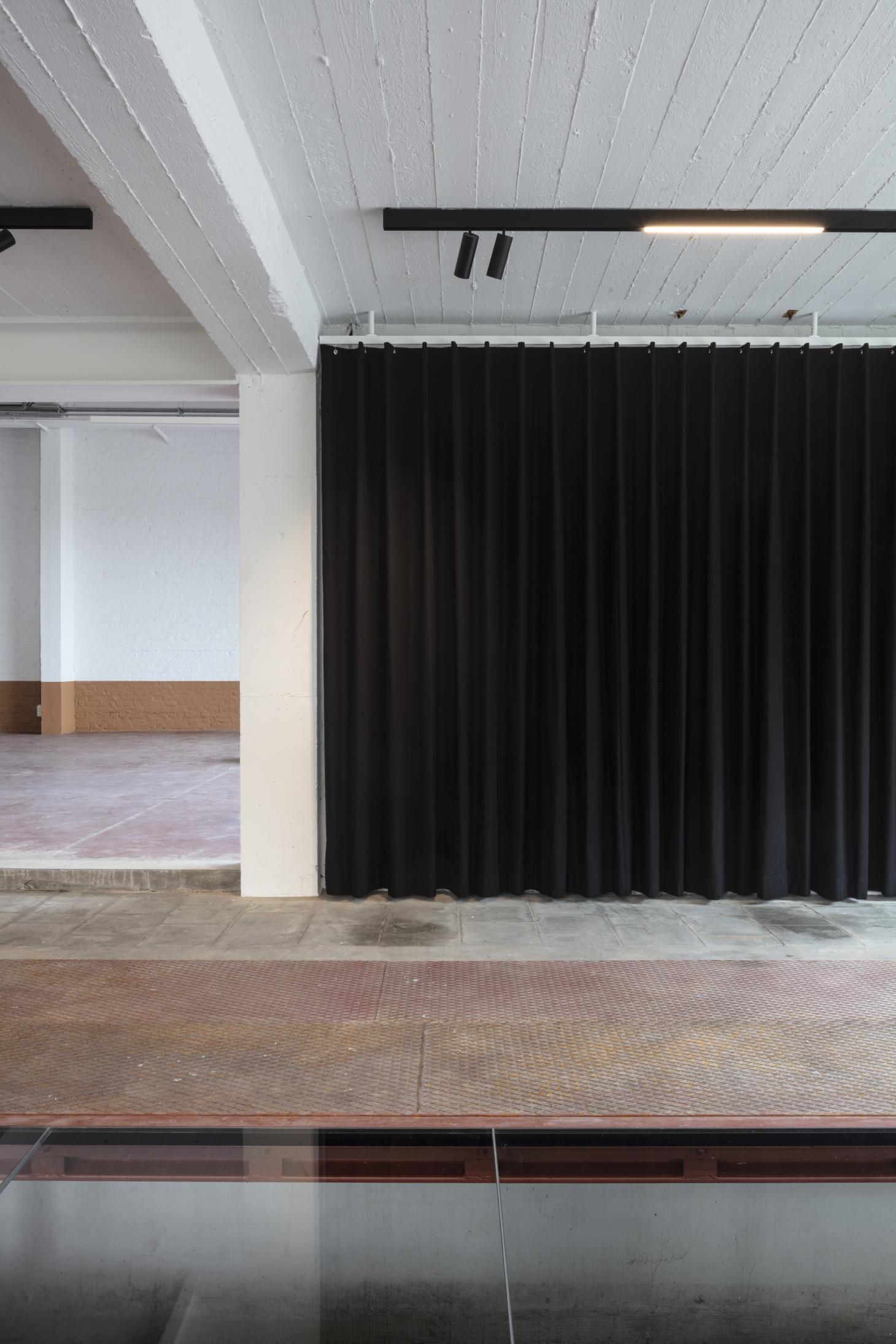
The project occupies a former garage building in the centre of Kortrijk.
There is something theatrical about the way the levels are composed, and Vandenborre refers to Lars von Trier’s film, Dogville, when talking about the organisation of the spaces and how they relate to one another. ‘We removed parts of the ceilings in some of the spaces, and although independent from one another, they remain interconnected and create something very abstract,' he explains.
There is appropriate distance between the workspaces and the exhibition area, but GOOSE sees no borders when it comes to creating. On the ground floor, a wide sliding glass door acts as a façade, and this space is seen as an ‘urban stage’. ‘One day, we will put a food truck here, and with the glass door open, there will be no distinction between the street and the interior,’ says Mickael. Here, the former garage is enclosed in glass, and acts as an expansion of the exhibition space.
Safari Studios seem to be the perfect home for the band’s impressive collection of musical instruments and technical equipment, which inhabit the new space so naturally. Known for their avant-garde sound, the four musicians have been deeply engaged with today's cross-pollinating cultural scene, and their new studios further express this philosophy. With its distinctive glass façade, Safari Studios is welcoming and open, hinting at all the exciting things about to happen there.
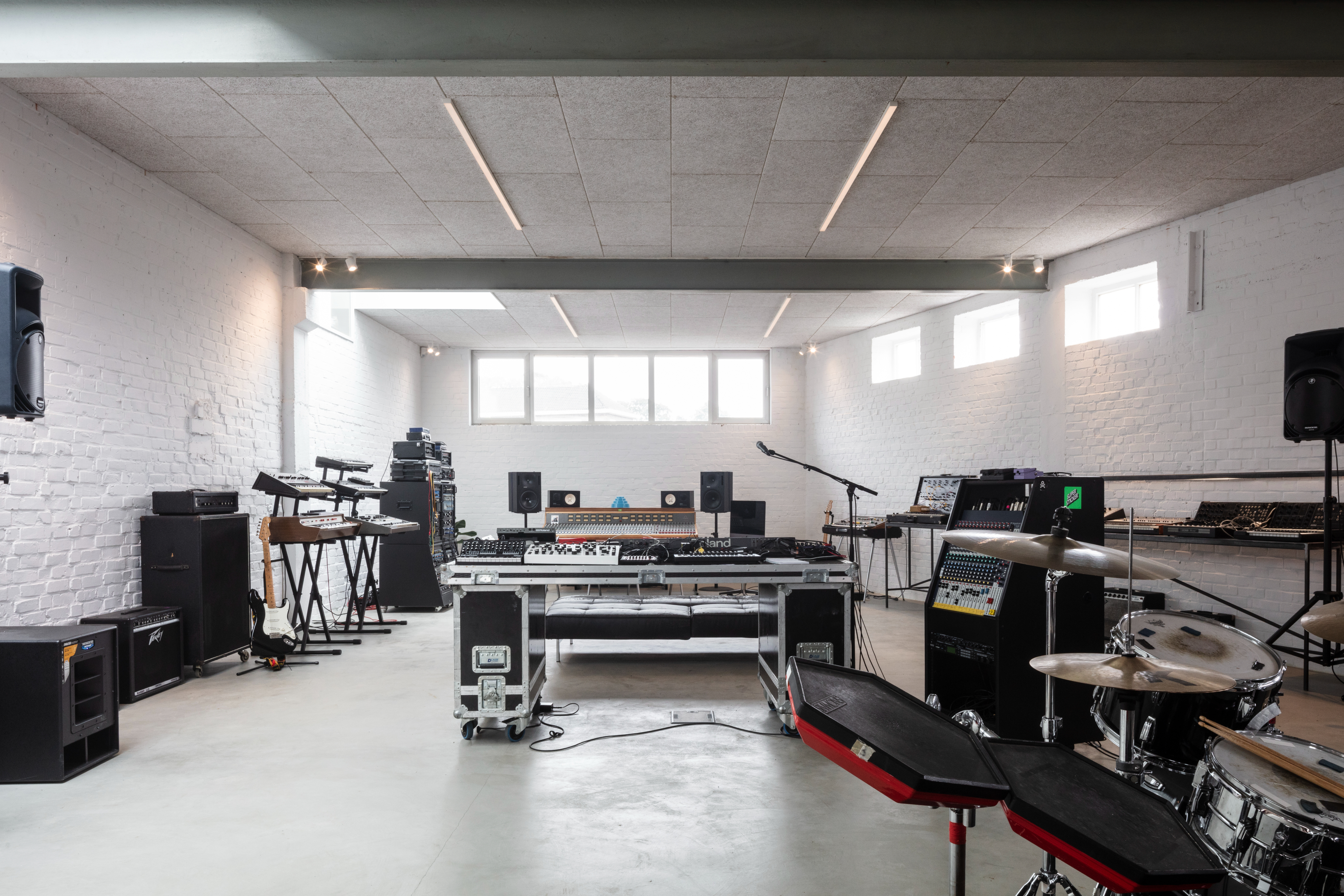
The architect carefully restored the existing structure into a multi-use space focusing on music production.
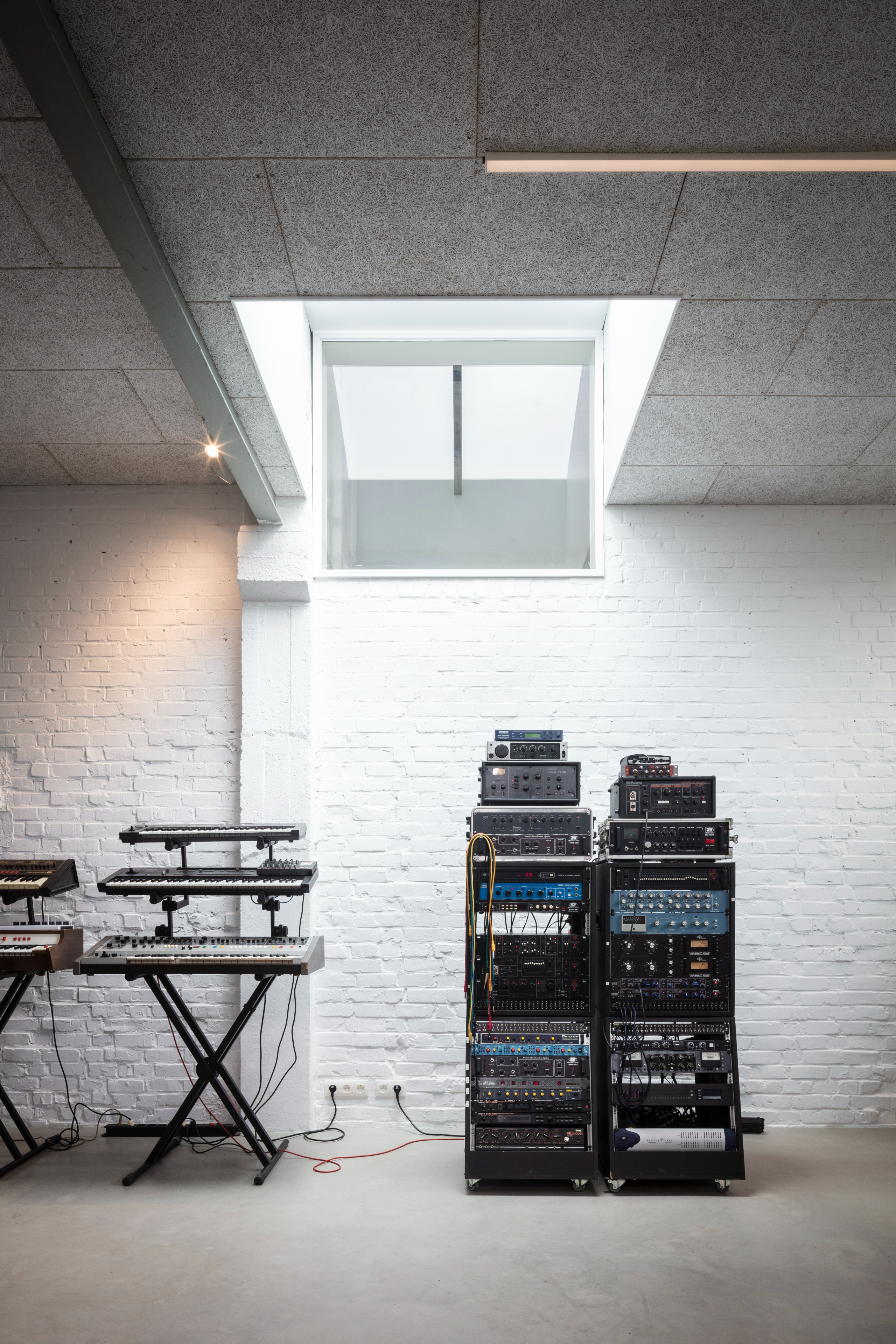
The architect worked in close collaboration with his musician clients during the design development.
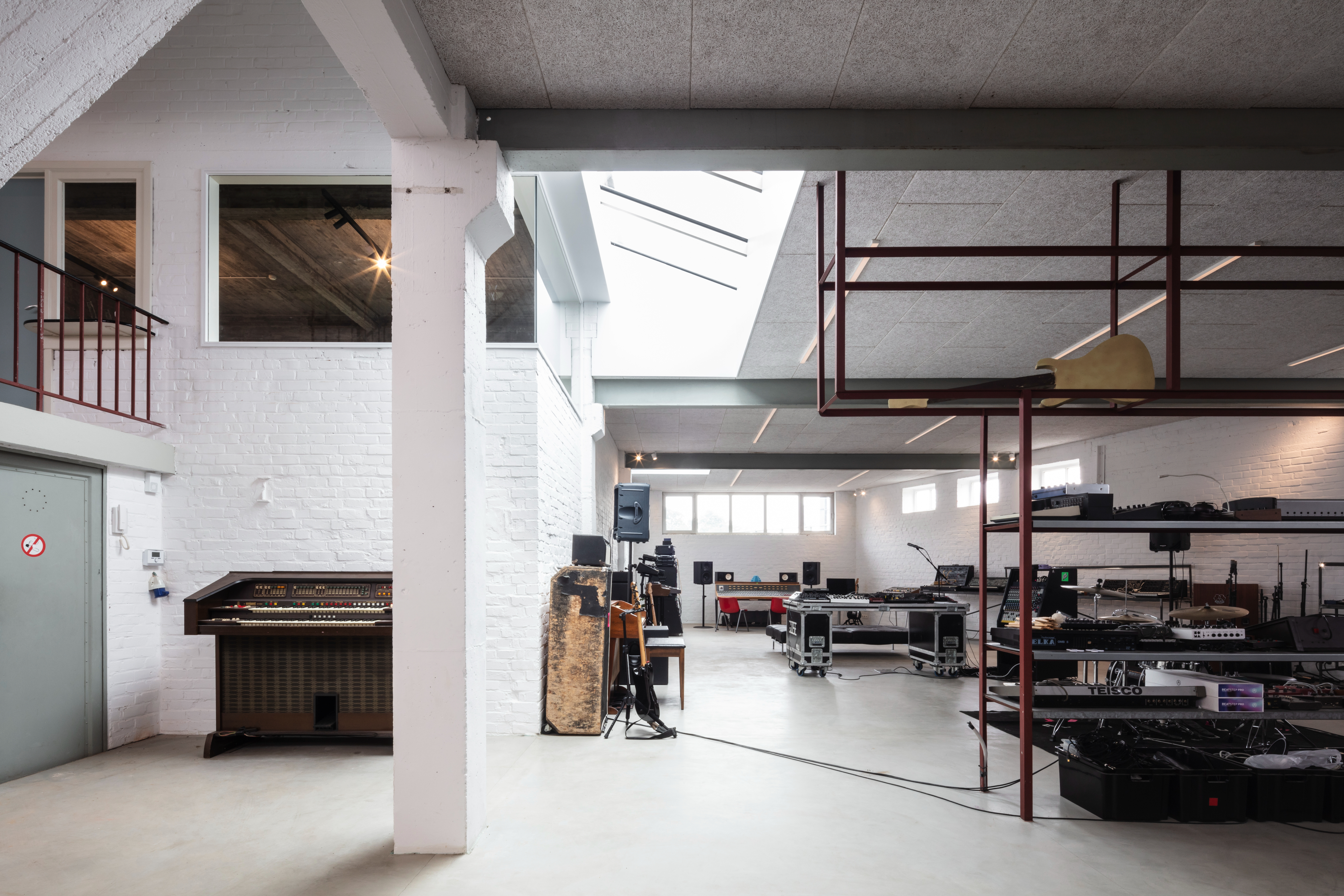
Safari Studios comprises three recording studios, a kitchen-living area...
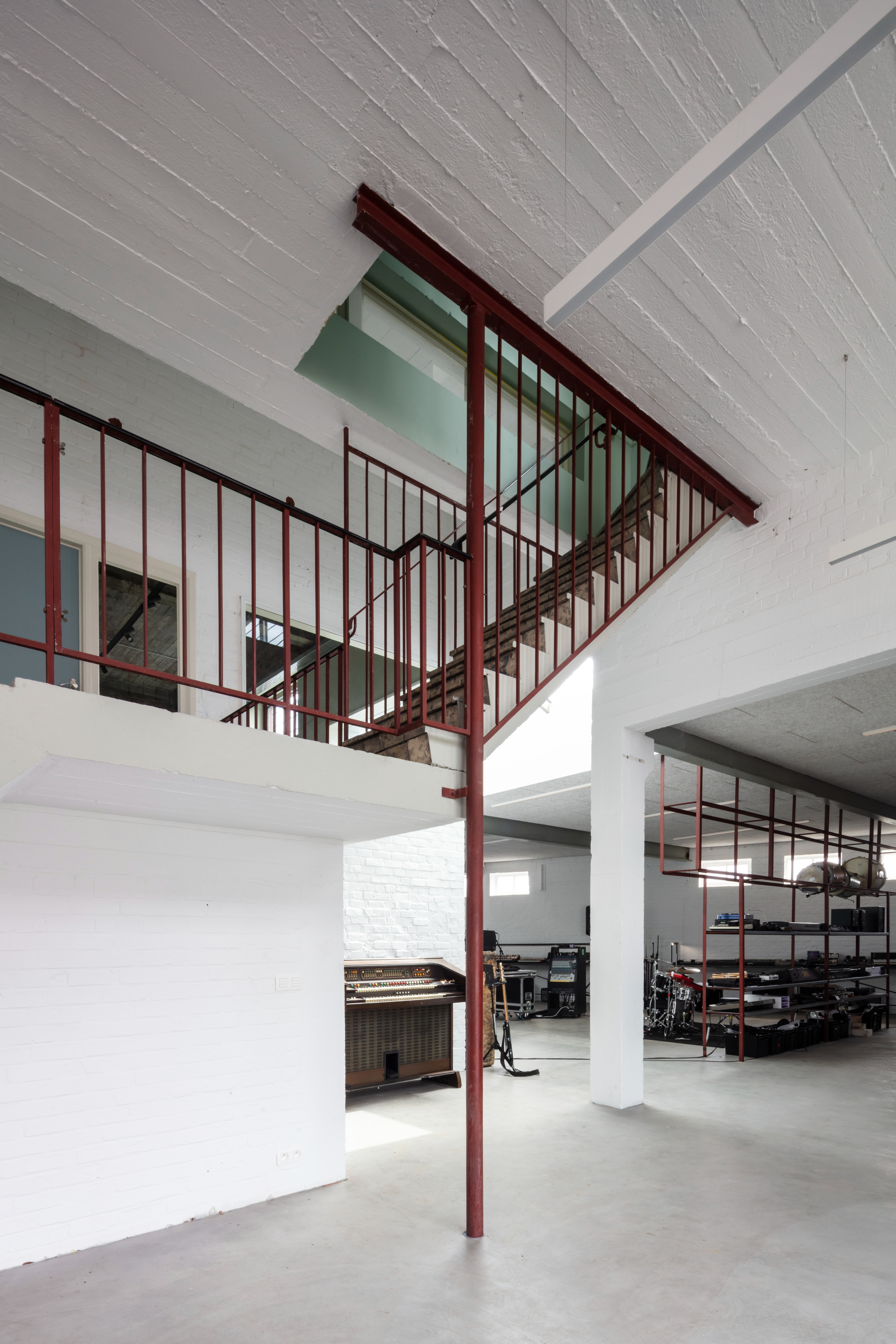
...and an expansive ground floor dedicated to exhibitions and artistic performances.

The space features a muted colour palette, inspired by the Bauhaus School.
Receive our daily digest of inspiration, escapism and design stories from around the world direct to your inbox.
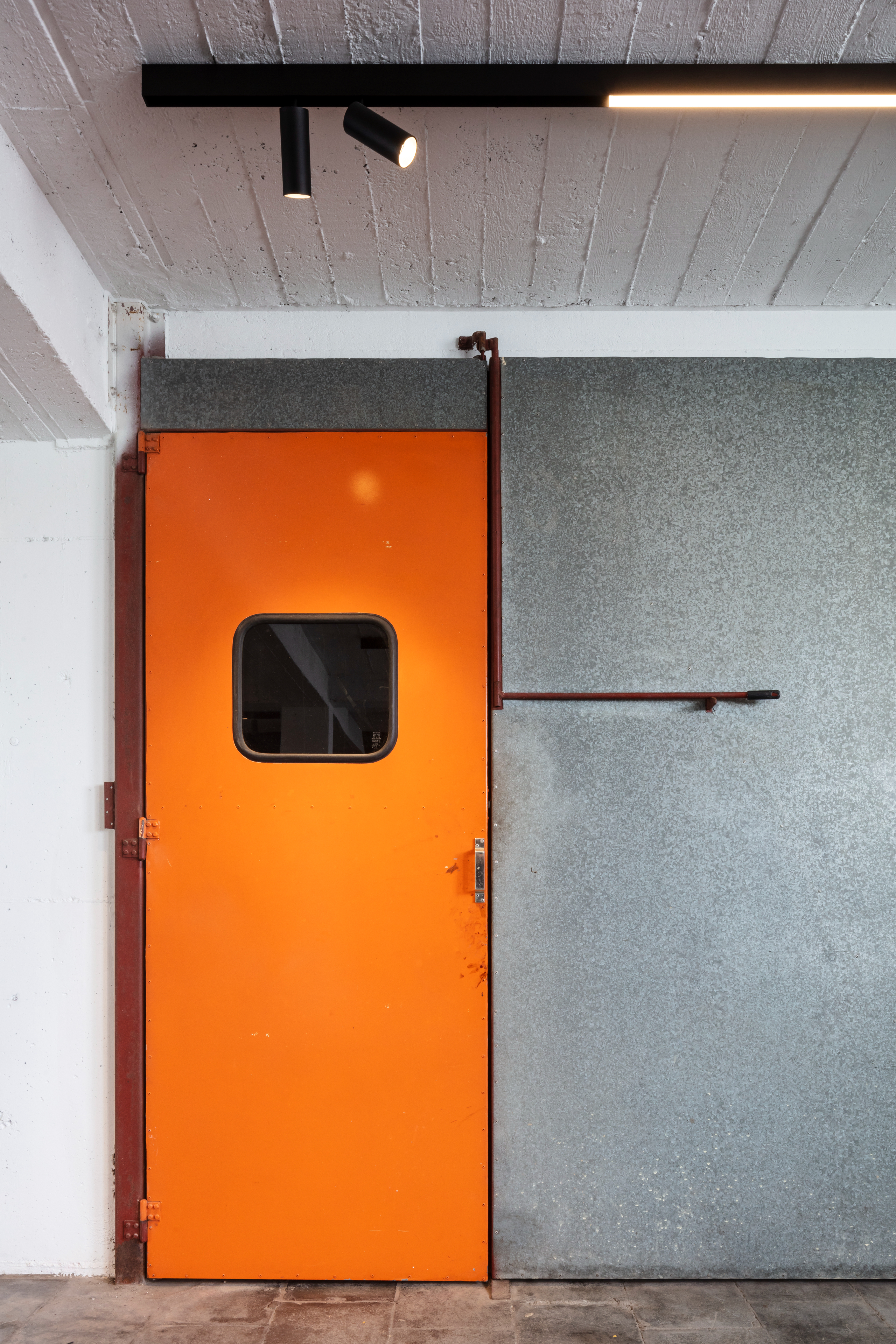
Meanwhile, the interior retains the original structure, as well as some details.
INFORMATION
For more information visit the website of Steven Vandenborre
-
 The new Tudor Ranger watches master perfectly executed simplicity
The new Tudor Ranger watches master perfectly executed simplicityThe Tudor Ranger watches look back to the 1960s for a clean and legible design
-
 This late-night hangout brings back 1970s glam to LA’s Sunset Boulevard
This late-night hangout brings back 1970s glam to LA’s Sunset BoulevardGalerie On Sunset is primed for strong drinks, shared plates, live music, and long nights
-
 How Memphis developed from an informal gathering of restless creatives into one of design's most influential movements
How Memphis developed from an informal gathering of restless creatives into one of design's most influential movementsEverything you want to know about Memphis Design, from its history to its leading figures to the pieces to know (and buy)
-
 The diverse world of Belgian embassy design – 'style and class without exaggeration'
The diverse world of Belgian embassy design – 'style and class without exaggeration''Building for Belgium: Belgian Embassies in a Globalising World' offers a deep dive into the architecture representing the country across the globe – bringing context to diplomatic architecture
-
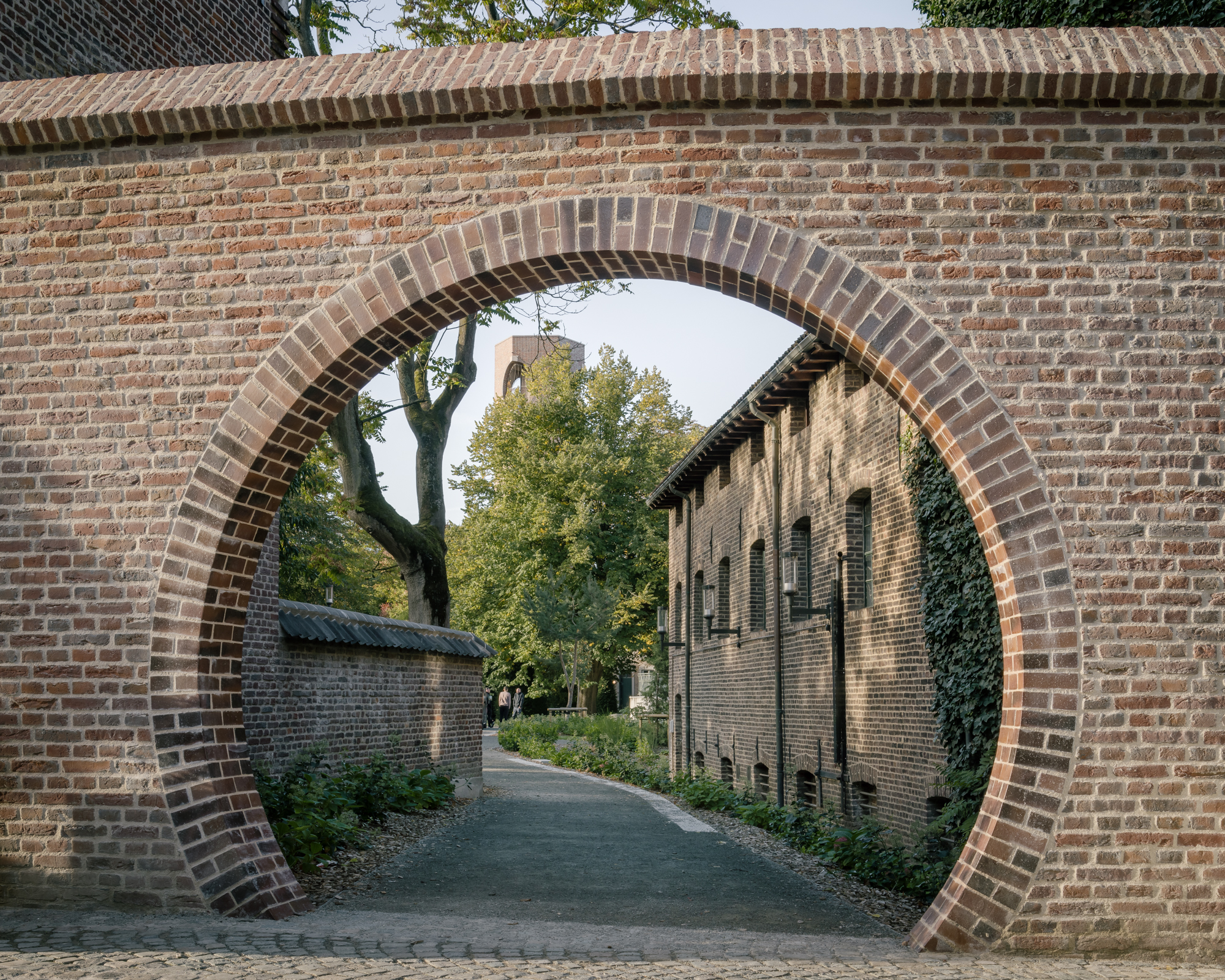 How a former women’s community in Belgium became a model for adaptive reuse
How a former women’s community in Belgium became a model for adaptive reuseA Hasselt beguinage, transformed to the 21st century through smart adaptive reuse by London-based architect David Kohn and Antwerp's Dirk Somers, makes for a fitting home for the city's Interior Architecture university programme
-
 Woodstock House reinterprets modernist legacy through 21st-century sustainability
Woodstock House reinterprets modernist legacy through 21st-century sustainabilityLocally sourced materials and high design ambition merge in the newest residential work by Belgium’s BC Architects & Studies & Materials
-
 ‘Landscape architecture is the queen of science’: Emanuele Coccia in conversation with Bas Smets
‘Landscape architecture is the queen of science’: Emanuele Coccia in conversation with Bas SmetsItalian philosopher Emanuele Coccia meets Belgian landscape architect Bas Smets to discuss nature, cities and ‘biospheric thinking’
-
 Explore the landscape of the future with Bas Smets
Explore the landscape of the future with Bas SmetsLandscape architect Bas Smets on the art, philosophy and science of his pioneering approach: ‘a site is not in a state of “being”, but in a constant state of “becoming”’
-
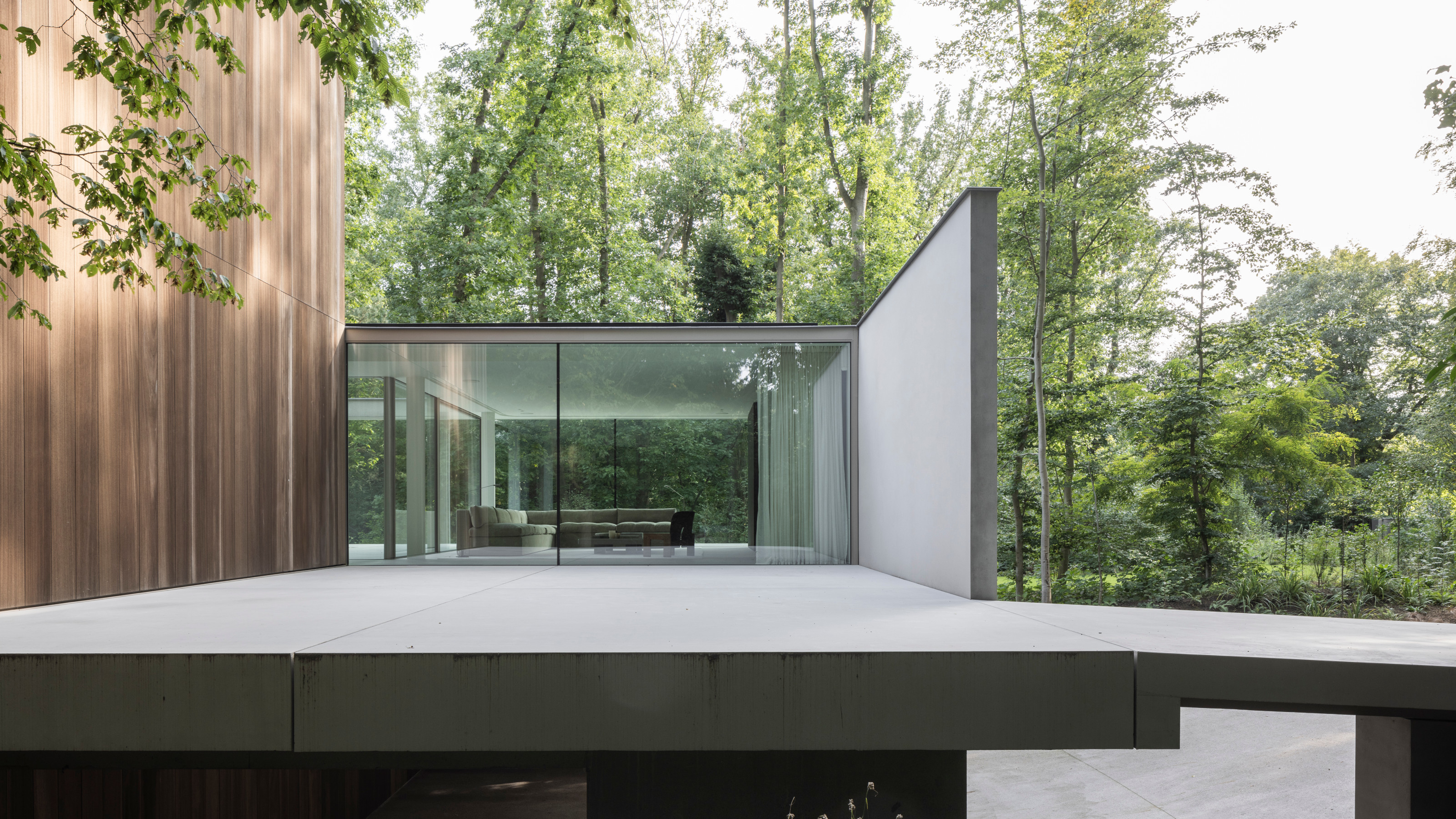 A contemporary concrete and glass Belgian house is intertwined with its forested site
A contemporary concrete and glass Belgian house is intertwined with its forested siteA new Belgian house, Govaert-Vanhoutte Architecten’s Residence SAB, brings refined modernist design into a sylvan setting, cleverly threading a multilayered new home between existing trees
-
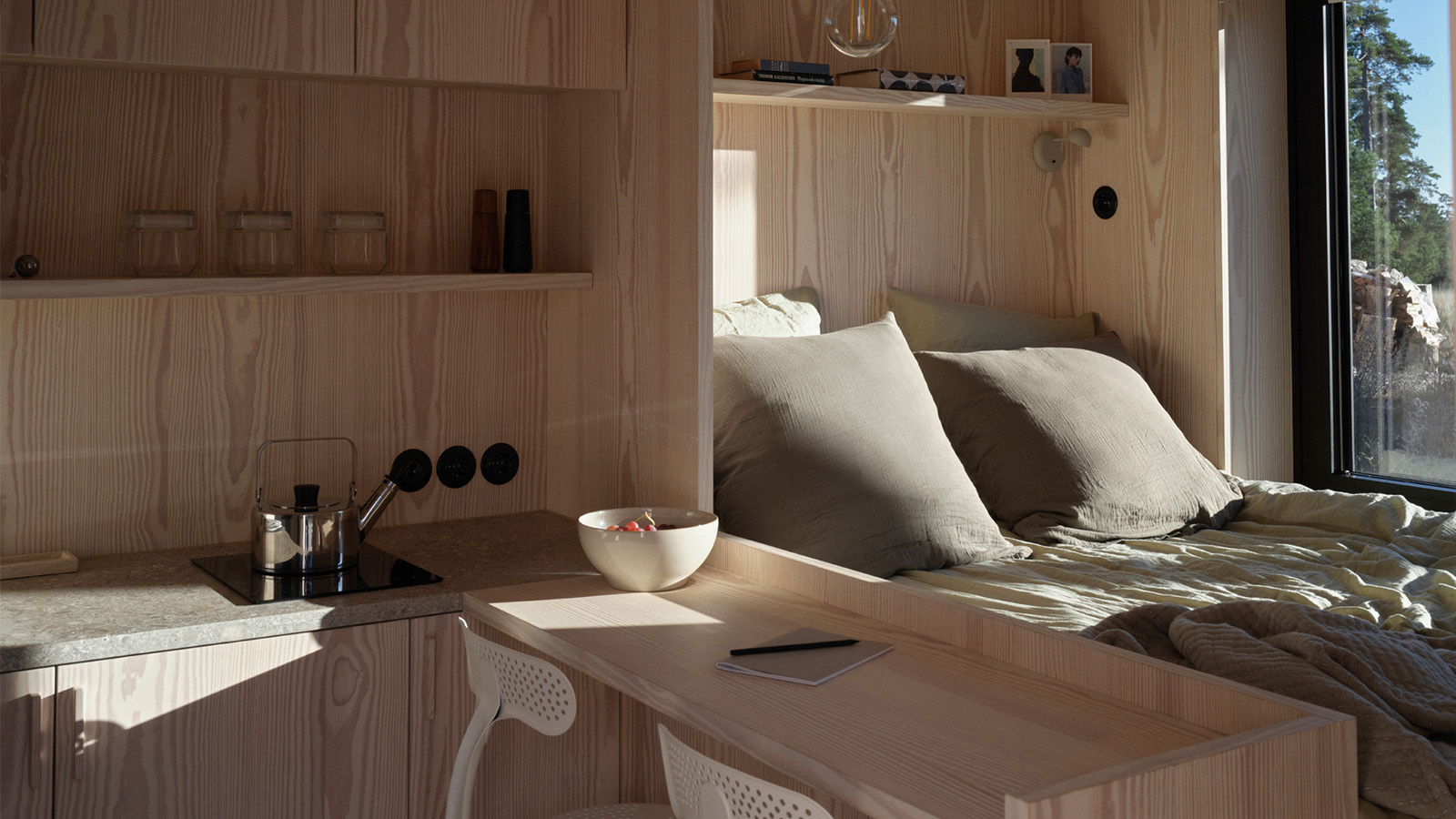 ‘Close to solitude, but with a neighbour’: Furu’s cabins in the woods are a tranquil escape
‘Close to solitude, but with a neighbour’: Furu’s cabins in the woods are a tranquil escapeTaking its name from the Swedish word for ‘pine tree’, creative project management studio Furu is growing against the grain
-
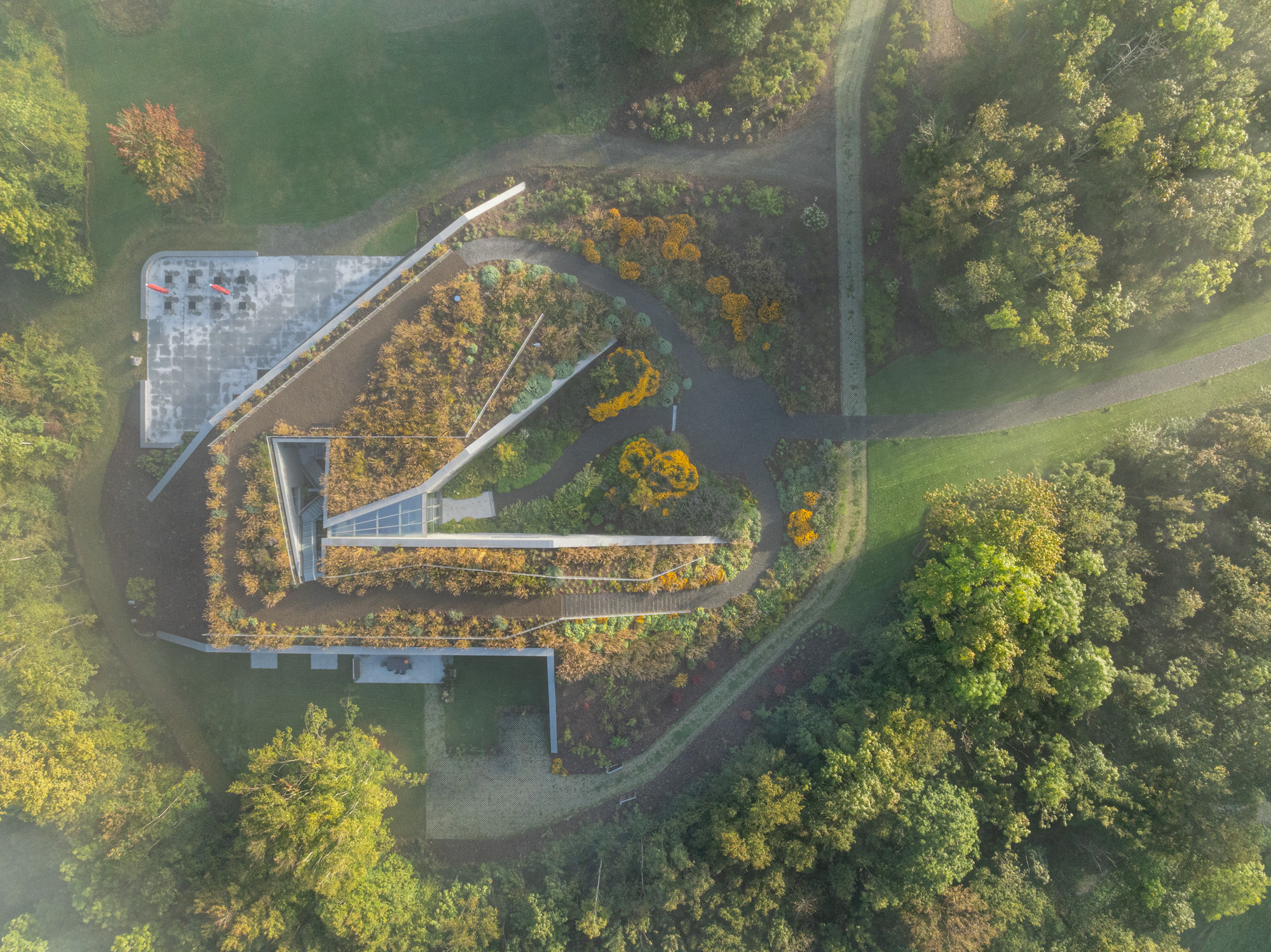 Tour Marche Arboretum, a new 'museum' of plants in Belgium
Tour Marche Arboretum, a new 'museum' of plants in BelgiumMarche Arboretum is a joyful new green space in Belgium, dedicated to nature and science – and a Wallpaper* Design Award 2025 winner